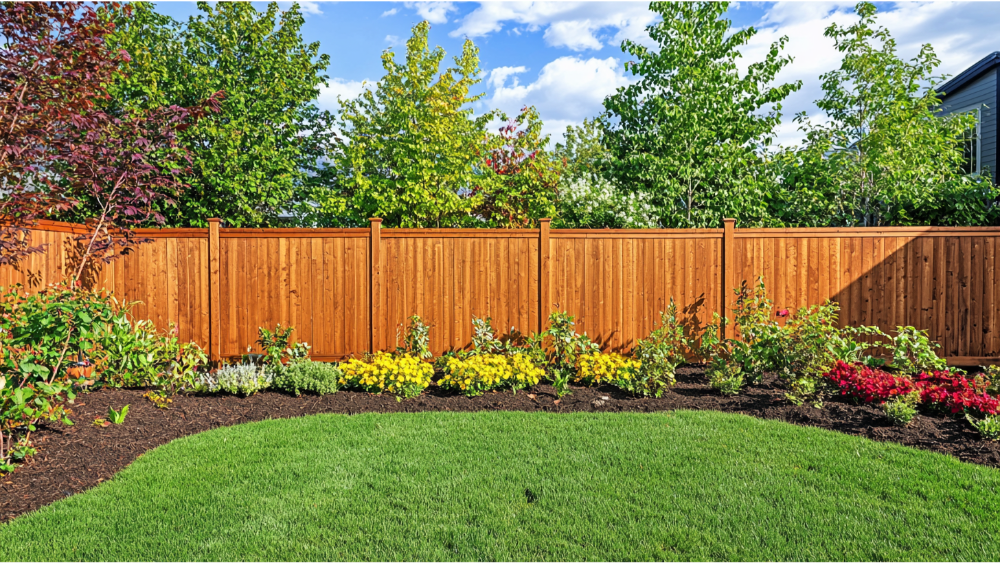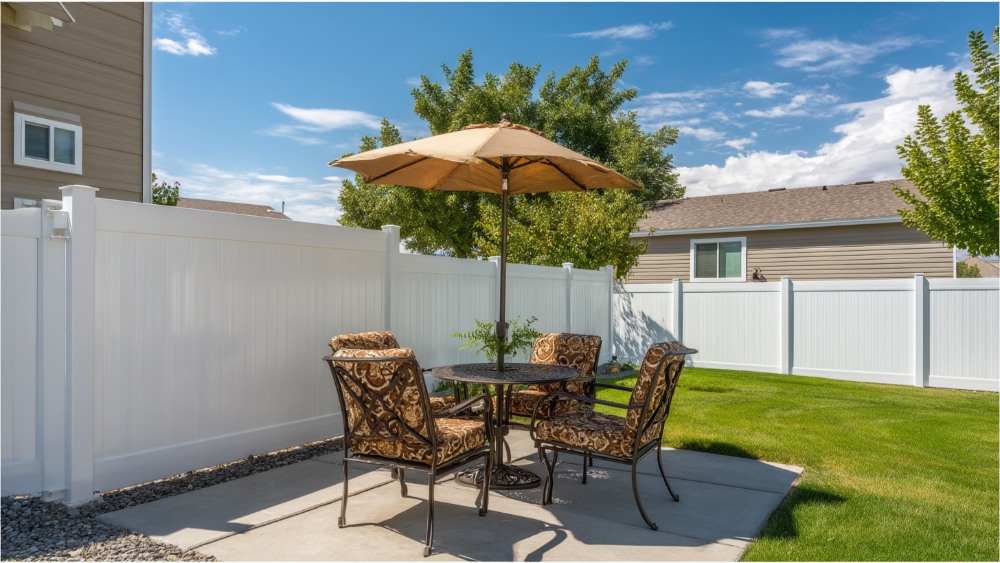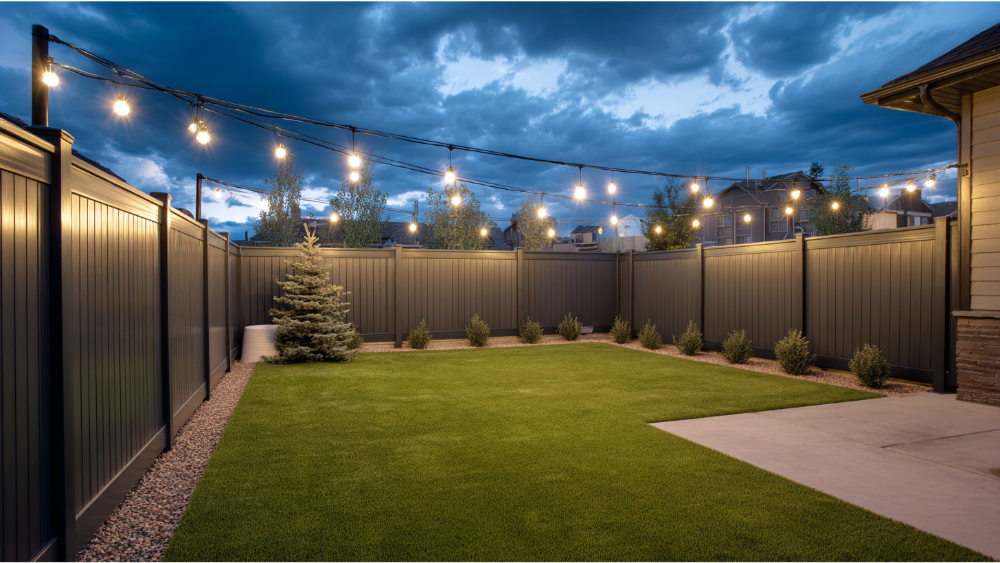Quick Answer: Is a PVC Fence Cheaper Than Wood?
In 2025, many Arizona homeowners are asking the same question when planning their next fencing project: is a PVC fence cheaper than wood? The short answer is no, not initially. A vinyl fence, made from polyvinyl chloride, usually comes with a higher up front cost compared to a wood fence. However, when you consider long term costs, including maintenance, repairs, and durability, a PVC fence becomes the more cost effective option for many homes in Phoenix, Mesa, and surrounding areas.
This guide will break down installation costs, upkeep requirements, life expectancy, and more. Whether you’re replacing an old fence or considering your first new fence, this comparison will help you choose the right fence material for your needs and budget.
Upfront Installation Costs: Comparing Wood vs Vinyl

Fence Costs Per Linear Foot
As of 2025, wood fence cost typically ranges between $10 to $30 per linear foot, depending on style, type of wood, and terrain. A vinyl fence generally costs between $15 to $40 per linear foot. While this makes PVC seem more expensive at first, it is essential to understand what goes into those numbers.
What’s Included in the Installation Costs?
Installation costs for both wood and vinyl include labor, posts, panels, and hardware. A wooden fence may seem cheaper initially, but remember that wood fences require additional materials like sealants, stains, and paints. A vinyl fence typically comes in entire panels, which are typically easier to install and don’t need any painting or finishing.
Here’s a side-by-side comparison of installation prices for popular fence styles:
| Style | Wood (per linear foot) | Vinyl (per linear foot) |
|---|---|---|
| Picket Fence | $10–$18 | $15–$25 |
| Privacy Fence | $20–$30 | $25–$40 |
| Ranch Rail Fence | $12–$20 | $18–$30 |
For small projects, like enclosing a side yard, wood fences can be more budget friendly. However, if you’re fencing a full backyard or need a privacy fence, you may want to evaluate more than just the initial investment.
Maintenance and Long-Term Costs

Regular Maintenance Needs
Wood requires regular maintenance to stay in good shape. Arizona’s dry, sunny climate causes natural wood to fade, split, or crack over time, especially if left natural without sealant. Wood fences require repainting or resealing every two to three years, and they are susceptible to insect damage and rot.
On the other hand, a vinyl fence is nearly low maintenance. An occasional cleaning with a hose or pressure washer is typically enough. It doesn’t need sealing or painting, and it’s not affected by termites or wood rot.
| Maintenance Item | Wood Fence | Vinyl Fence |
|---|---|---|
| Sealing or Staining | Every 2–3 years | Not needed |
| Painting | Every 3–5 years | Not needed |
| Repairing Rot | As needed | Rarely needed |
| Cleaning | Regular deep cleaning | Occasional rinsing |
Total Cost Over Time
The total cost of owning a wooden fence goes up significantly due to other expenses like repairs, painting, and staining. Over 10 to 20 years, these long term costs can add up to thousands more compared to vinyl ones.
A vinyl fence often pays for itself within 10 years when factoring in its longer lifespan and lower upkeep.
Durability and Performance
Lifespan in Arizona’s Climate
A well-maintained wooden privacy fence can last 10 to 15 years in Arizona’s heat. But even the best wood fencing products will degrade faster when exposed to extreme weather conditions like sun, dust, and monsoon winds.
A vinyl privacy fencing solution, however, can last 20 to 30 years or more with proper care. Polyvinyl chloride resists sun damage, warping, and cracking, making it a smart choice in hot, dry regions.
Resistance to Elements
- Wood is vulnerable to rot, termites, and mold.
- Vinyl is resistant to moisture, pests, and UV rays.
- Both wood and vinyl can be impacted by severe weather, but vinyl tends to flex rather than break.
In short, vinyl fencing is better suited to handle Arizona’s challenging climate, making it the best fence material for long-term durability.
Appearance and Curb Appeal

Style Differences
Many homeowners love the natural, rustic look of wood fencing. It’s customizable and easy to paint or stain. If you’re aiming for a classic aesthetic, natural wood is hard to beat. However, that beauty comes with ongoing maintenance.
Modern vinyl fence panels offer impressive style variety, including options that mimic vinyl wood finishes. A white vinyl fence offers a clean, uniform look that pairs well with modern architecture and adds curb appeal with no upkeep.
Home Value Considerations
Well maintained fencing can boost home value. A deteriorating wood fence can have the opposite effect. Because vinyl fencing retains its appearance for decades, it’s a good long-term investment when considering resale value.
Environmental and Sustainability Factors
Wood: Renewable but High Maintenance
Wood fencing products are biodegradable and often sourced sustainably. However, many types of wood fencing are pressure-treated with chemicals and require toxic sealants. That reduces their environmental friendliness.
Vinyl: Manufactured but Recyclable
Vinyl fences are made from plastic and not biodegradable, but many types of polyvinyl chloride fencing are recyclable. Plus, their long lifespan means fewer replacements and less waste over time. So, if you’re comparing fence material options by sustainability, vinyl costs less to maintain but comes with a larger initial cost to the environment.
Local Factors: What Works in Arizona

Heat, Dust, and Monsoons
Arizona’s heat and monsoon season can wreak havoc on wood fencing. Expansion and contraction cause cracks, and wood requires more frequent repair. Vinyl fences, on the other hand, resist all of these environmental factors.
HOA and Neighborhood Guidelines
Before installing, always check HOA guidelines. Some neighborhoods may prefer one fence type over another. Fortunately, both wood and vinyl are typically accepted when installed professionally.
Comparing to Other Fence Types
If you’re weighing your options between wood, vinyl, and other materials like chain link, here’s a quick snapshot:
- Wood: Great aesthetics, more maintenance.
- Vinyl: High performance, low maintenance.
- Chain link fence: Functional and budget friendly, but limited in style and privacy.
Real Cost Example: 100 Feet of Fence Installed
Let’s say you’re fencing 100 feet of backyard with a privacy fence.
| Category | Wood Fence | Vinyl Fence |
|---|---|---|
| Materials & Labor | $2,500 | $3,500 |
| Maintenance (10 yrs) | $1,500 | $300 |
| Repairs | $300 | $100 |
| Total Price (10 yrs) | $4,300 | $3,900 |
Despite the higher up front cost, the total price over a decade shows that vinyl fencing can save you money while keeping your yard looking great.
Frequently Asked Vinyl and Wood Fencing Questions
Is A Vinyl Fence Cheaper Than Wood?
Not initially. The initial investment for a vinyl fence is higher, but over time it becomes cheaper than a wooden fence due to less maintenance and a longer lifespan.
Which Is Better For Privacy?
Both vinyl and wood fences offer excellent privacy fence options. However, vinyl privacy fencing often has interlocking vinyl fence panels that eliminate gaps and resist shifting.
Can I Paint A Vinyl Fence?
No. A vinyl fence is not designed to be painted. It comes pre-colored and maintains its appearance for years.
Is Vinyl Really Maintenance-Free?
While not entirely maintenance-free, vinyl fences only need an occasional cleaning. Compared to wood, the difference in maintenance is significant.
Can Vinyl Stand Up To Arizona’s Heat?
Absolutely. High-quality polyvinyl chloride fencing is engineered for UV resistance and won’t crack or warp in the heat.
Final Thoughts: Which Fence Material Should You Choose?
So, fence vs fence, which one wins in 2025?
If you’re looking for a cost effective fence that lasts for decades with low maintenance, a vinyl fence is the clear winner. It may have a higher up front cost, but it delivers value in terms of appearance, durability, and total cost over time. If you’re working on small projects, have a tight budget, or love the look of natural wood, a wood fence could still be the right choice, especially if you’re comfortable with ongoing regular maintenance.
Still unsure which is the right fence for your property? We’re here to help.
Our team proudly serves Phoenix, Scottsdale, Mesa, Chandler, and the surrounding areas with expert advice and high-quality fencing installation. Whether it’s wood, vinyl, or chain link, we help you find the best fit for your home and budget.




